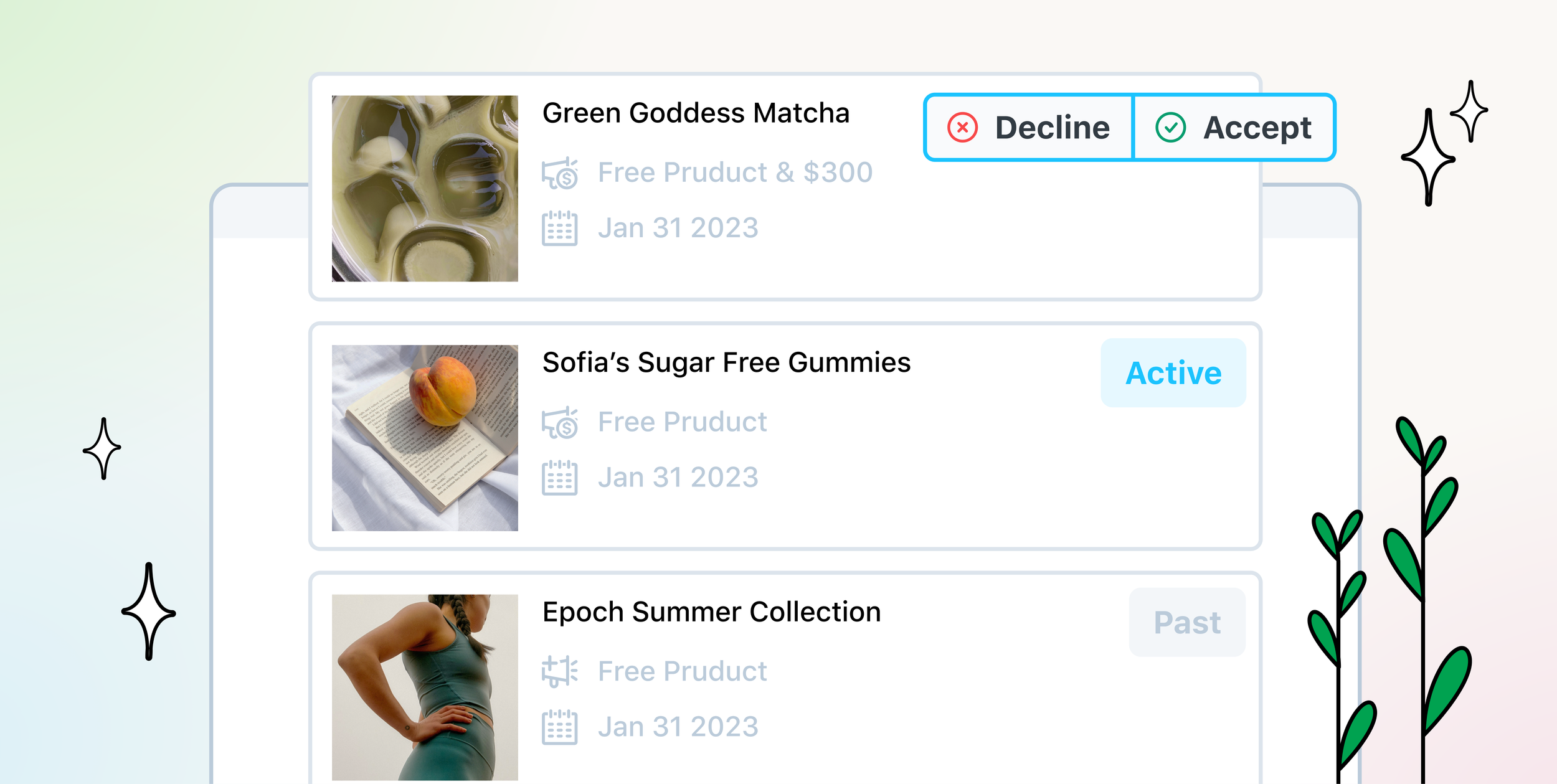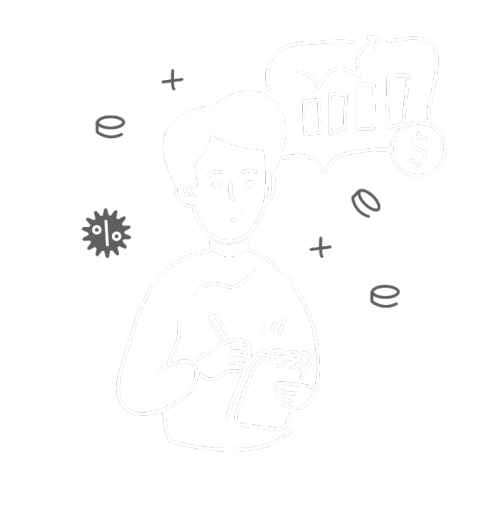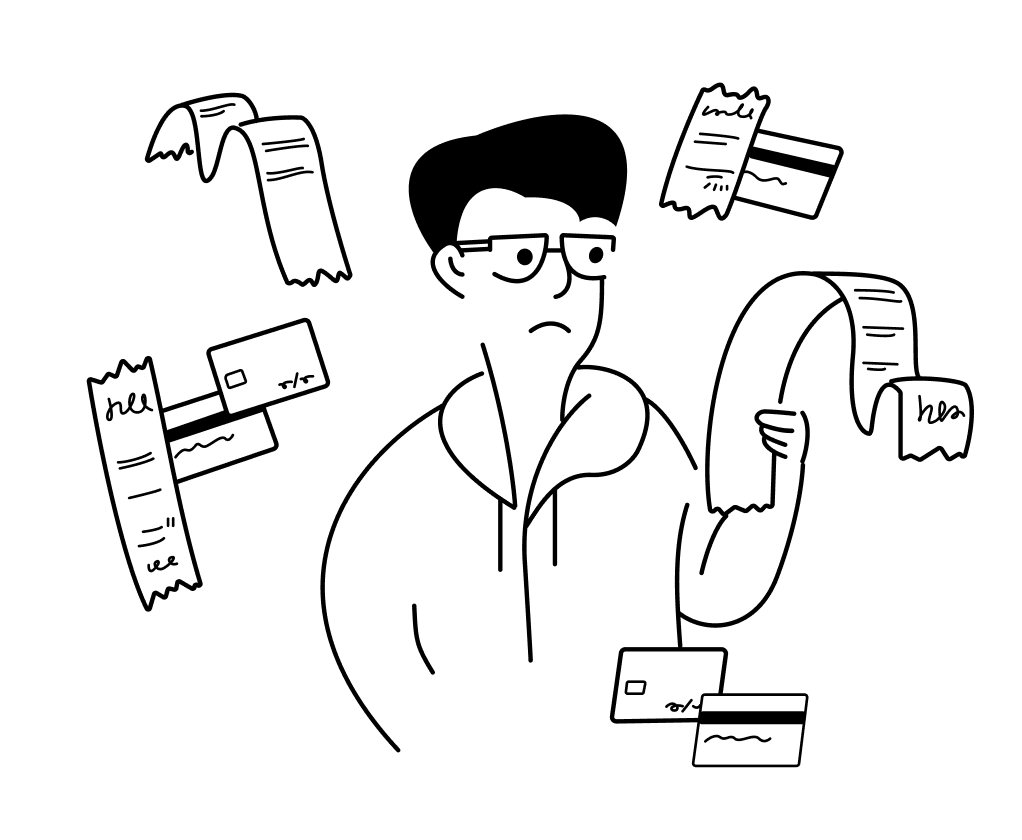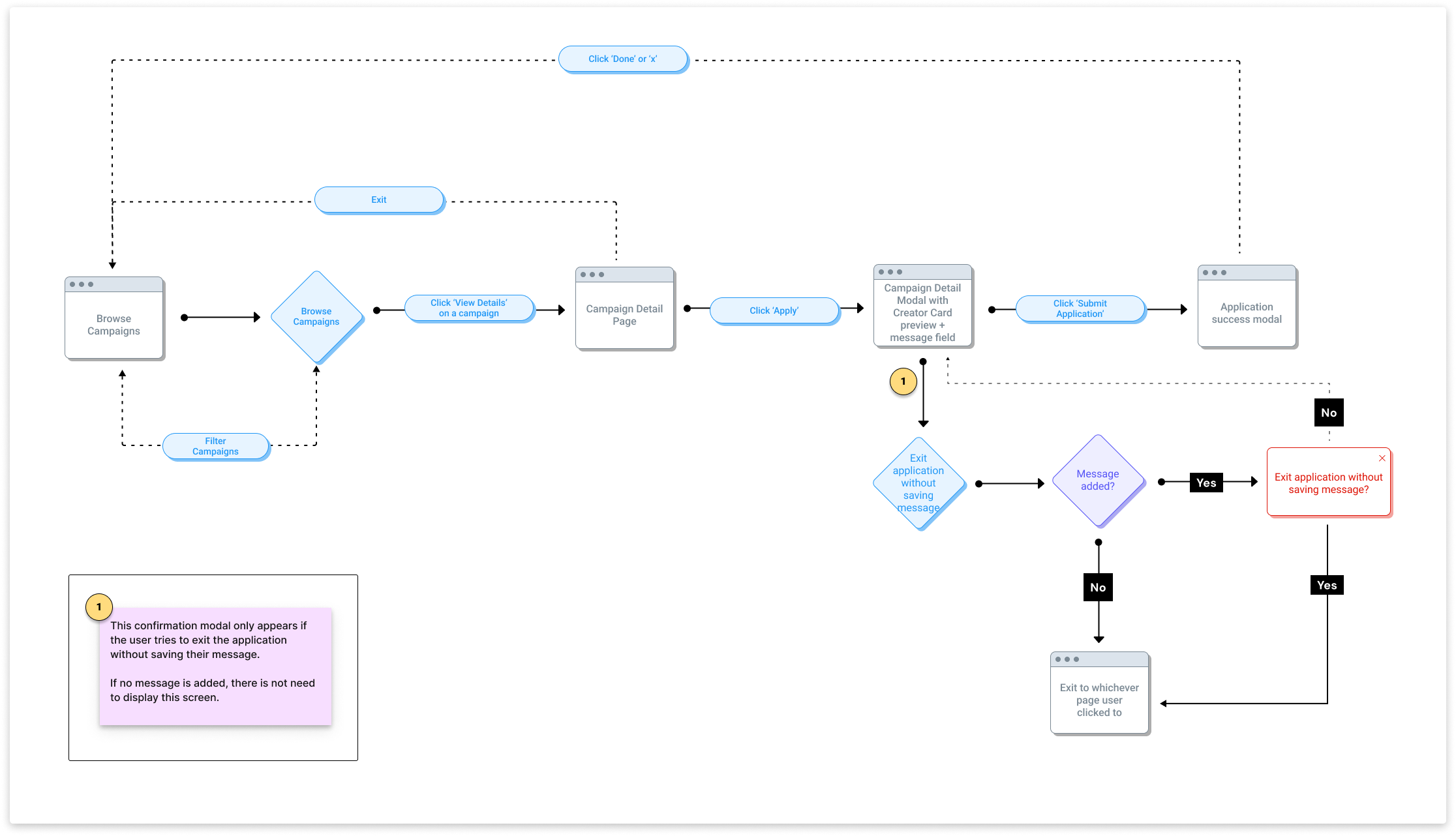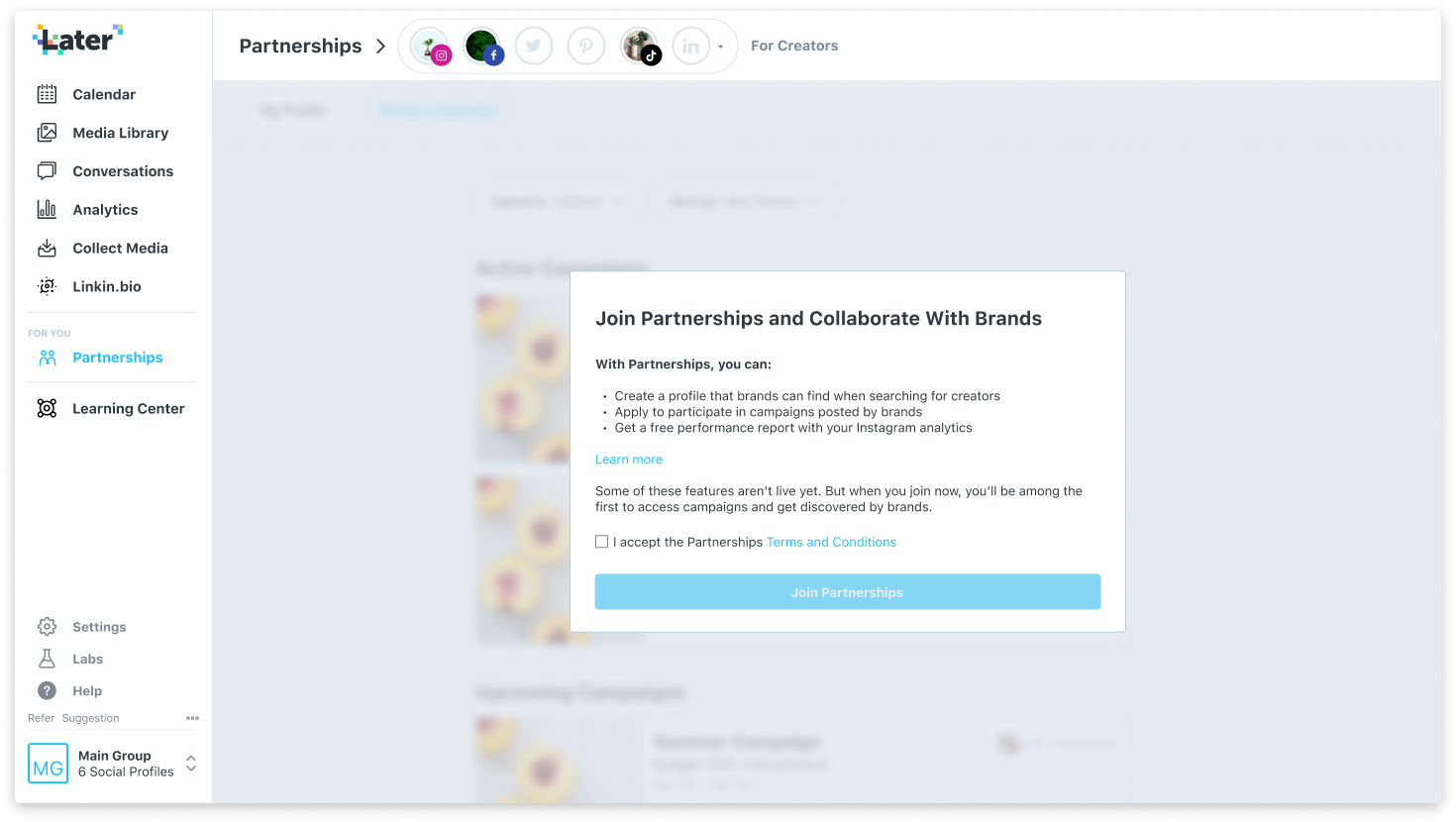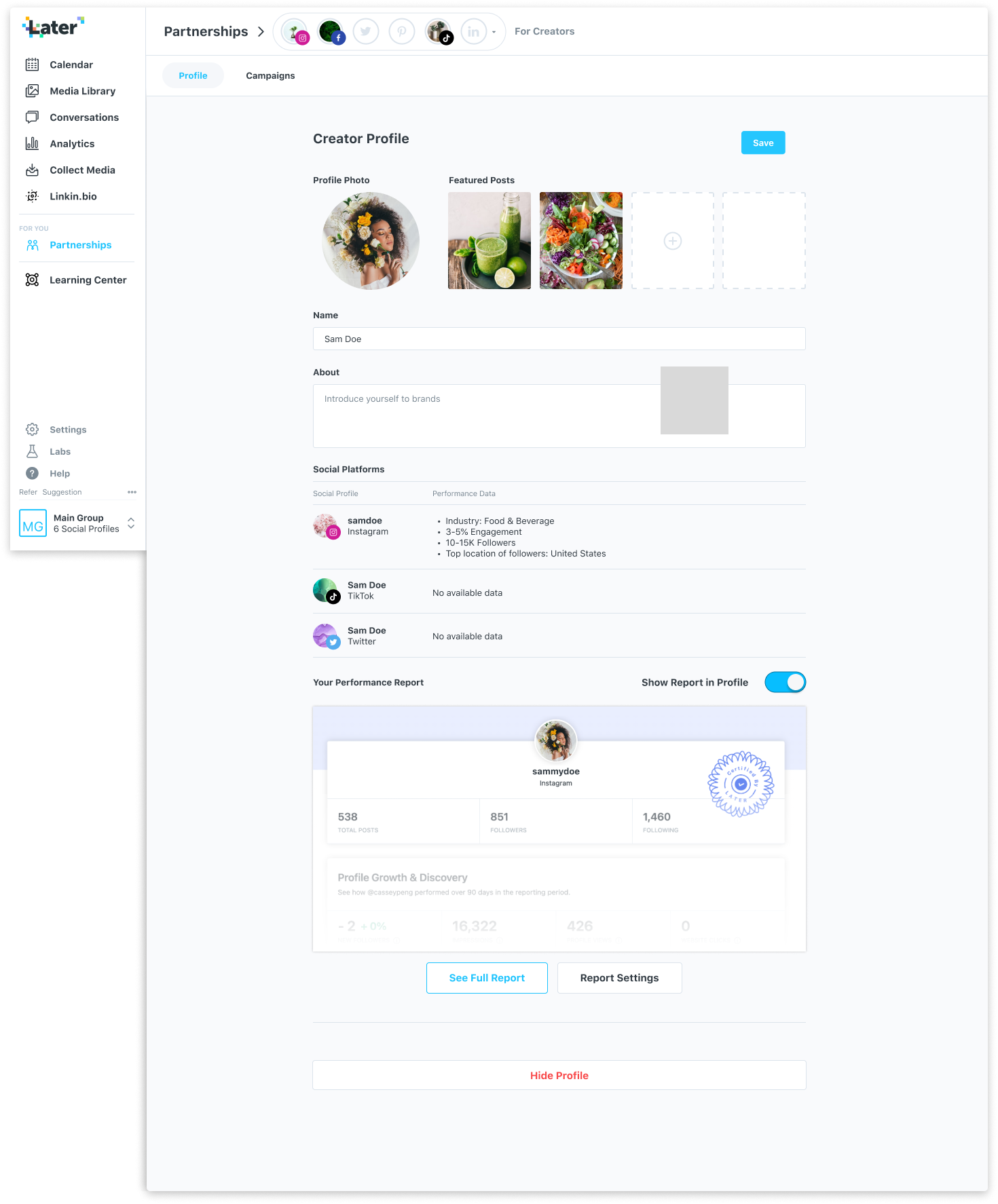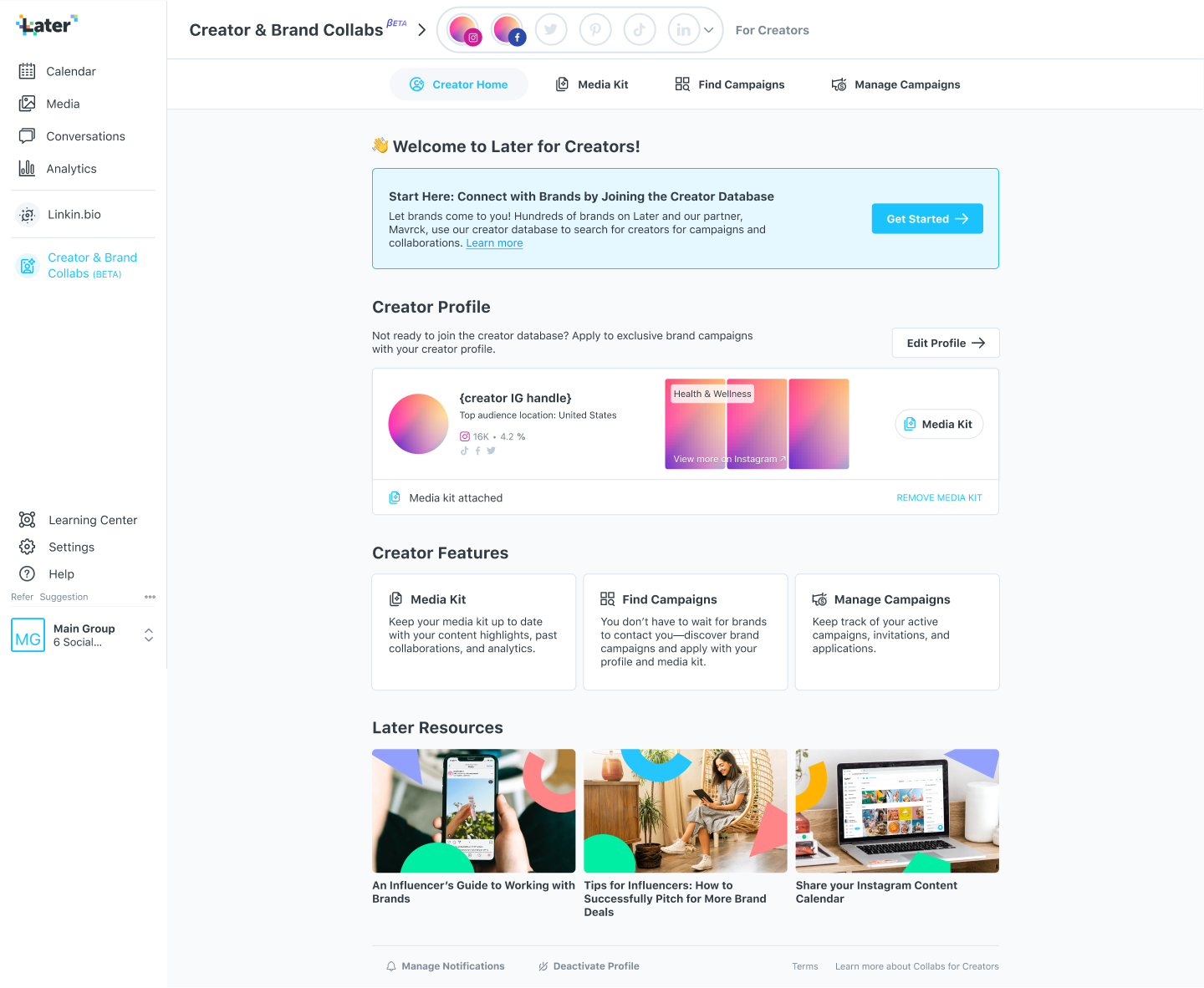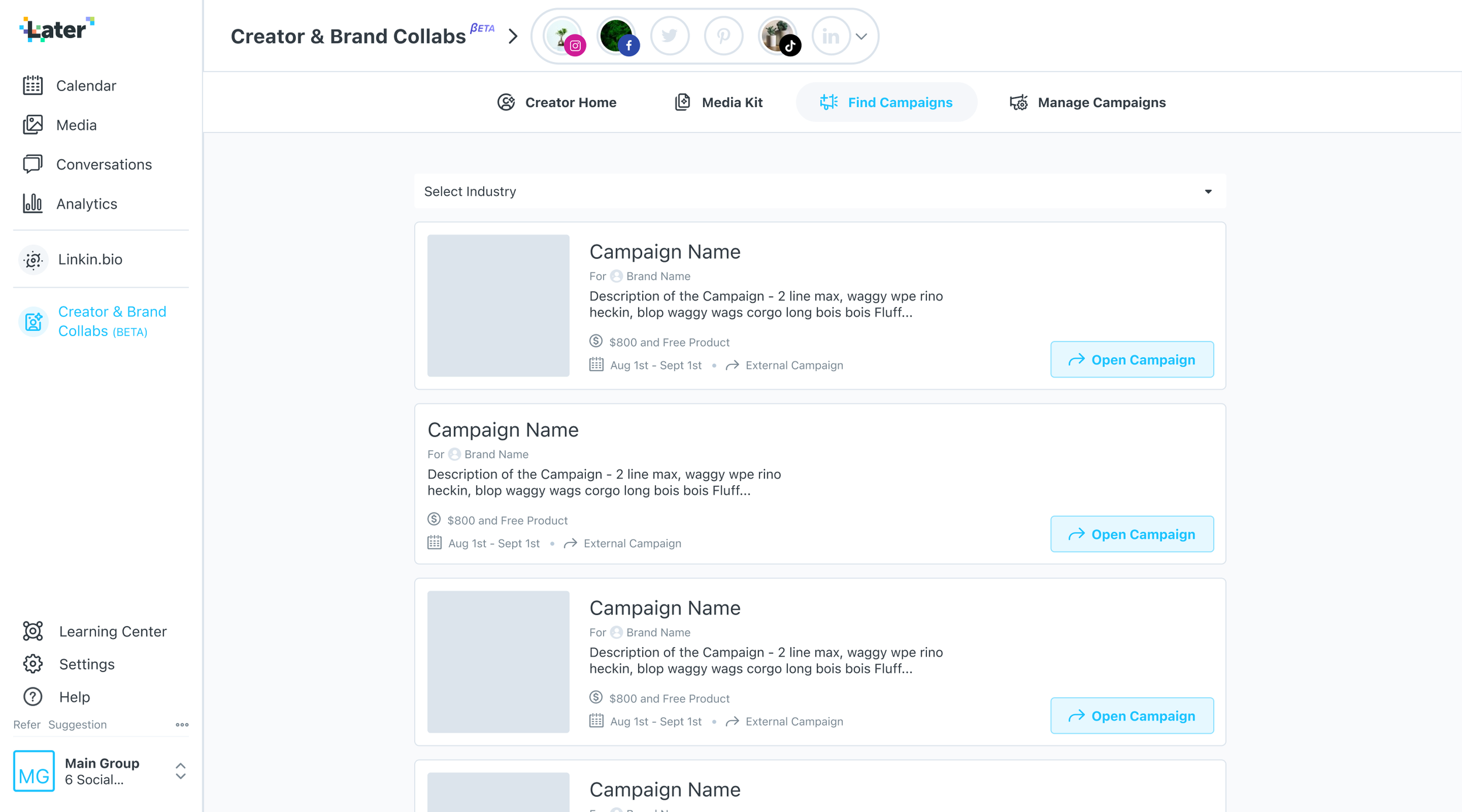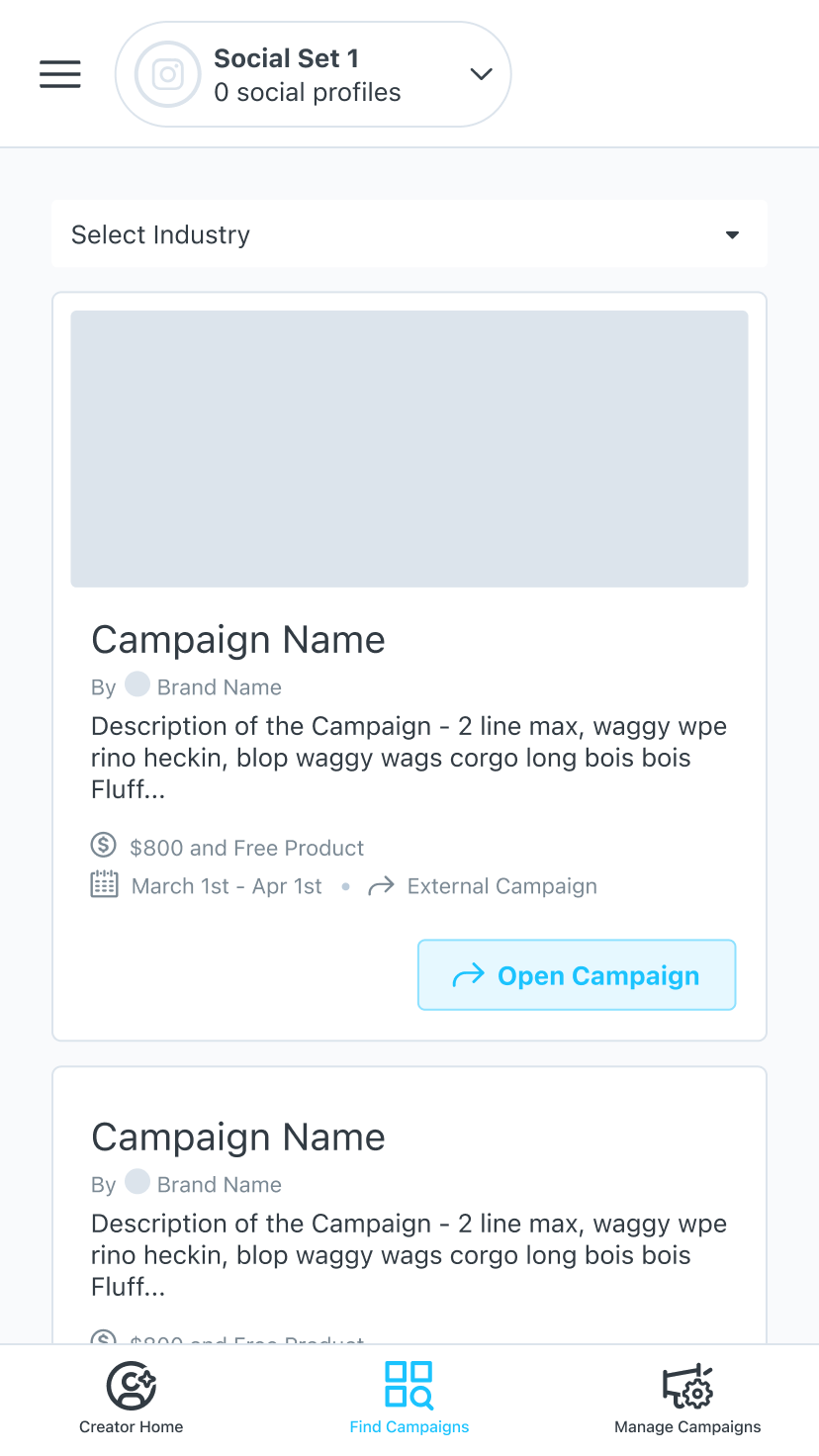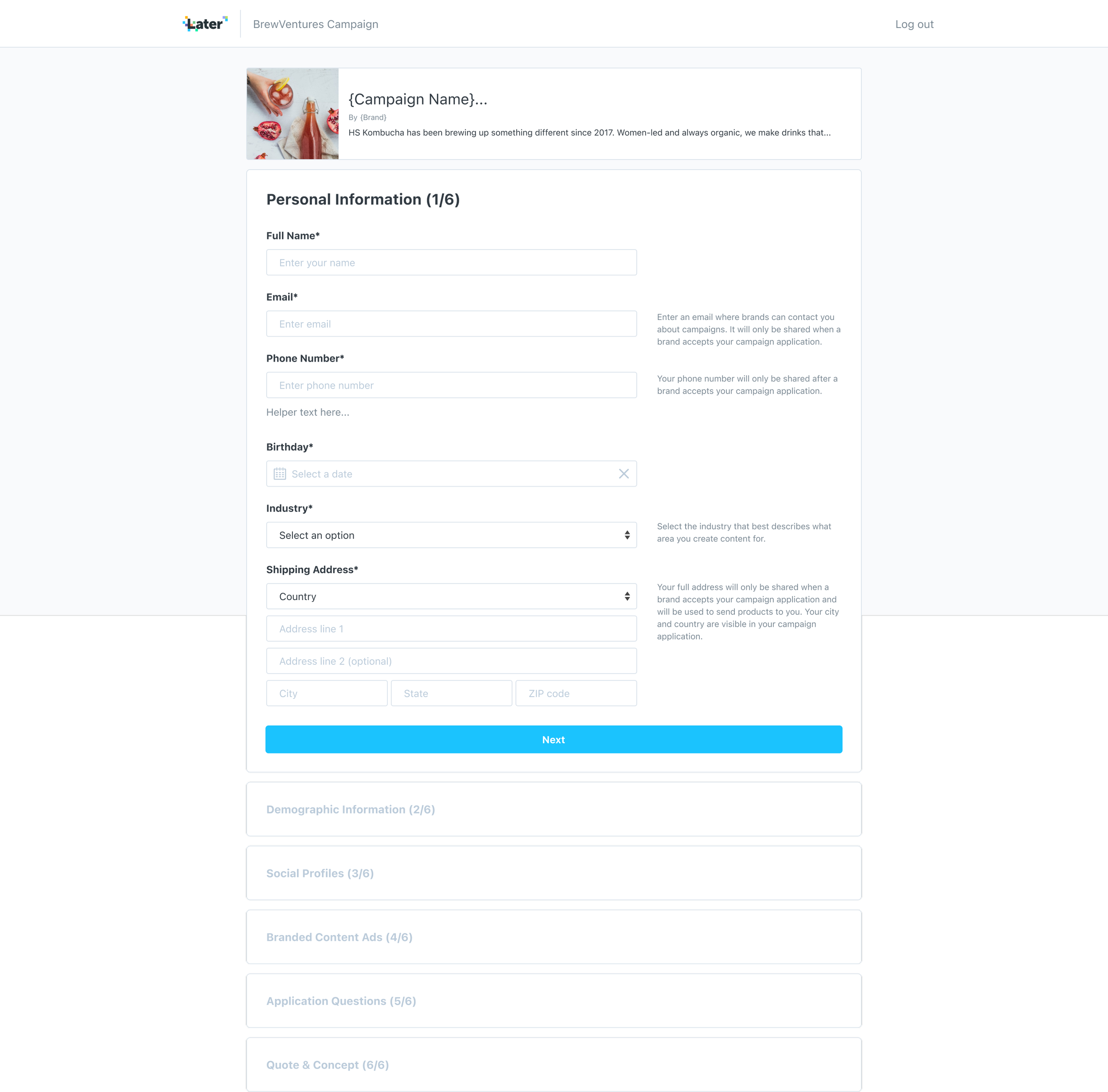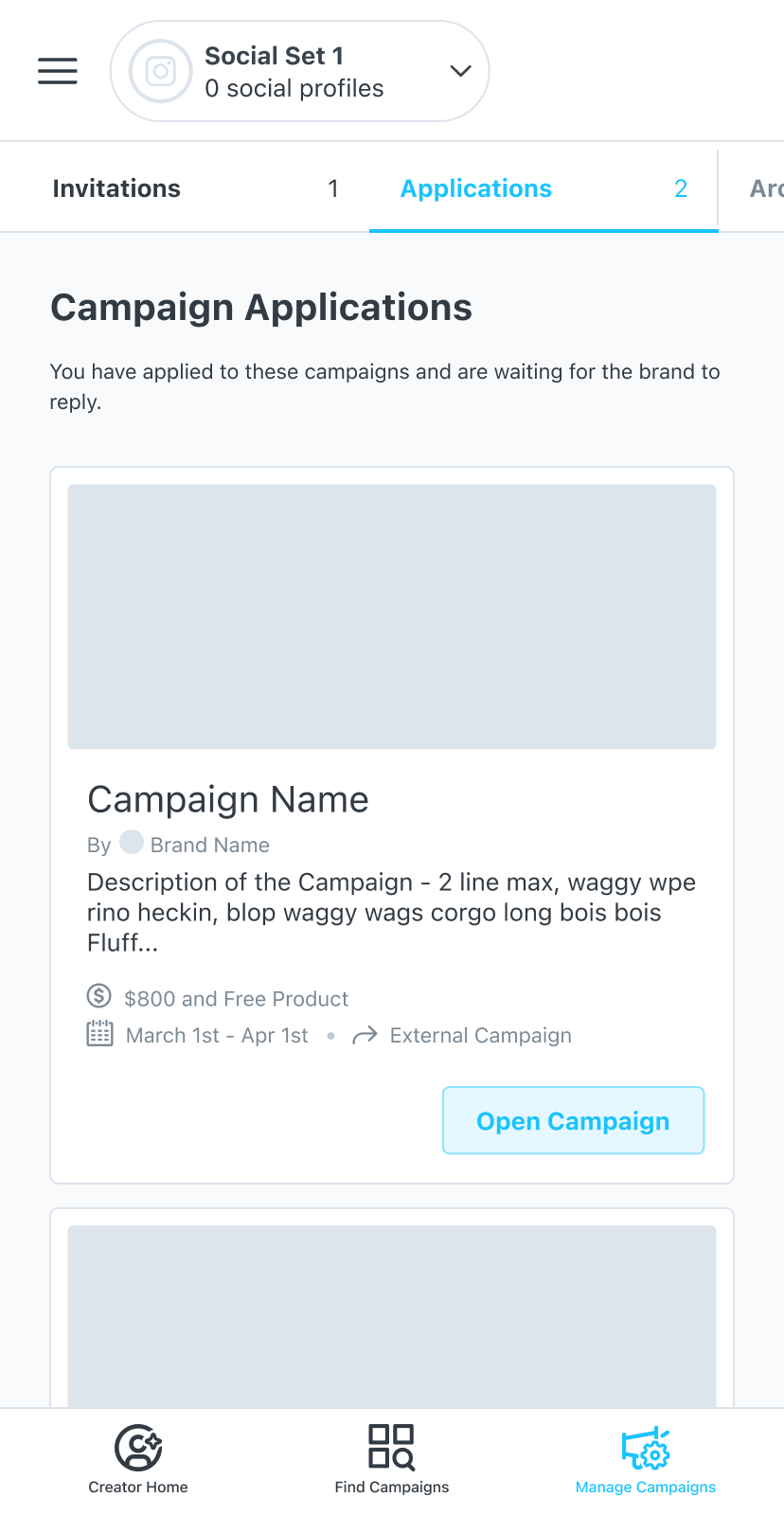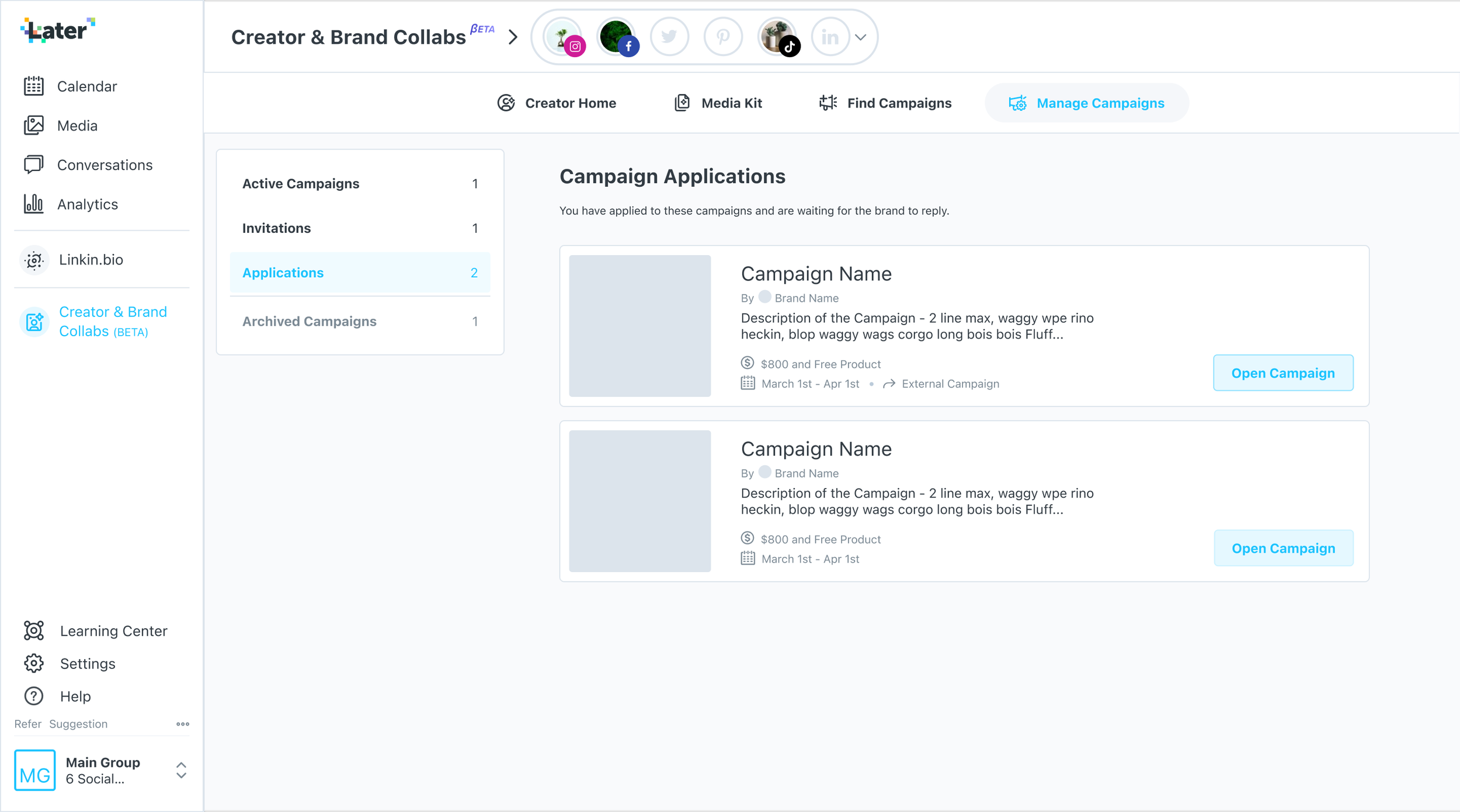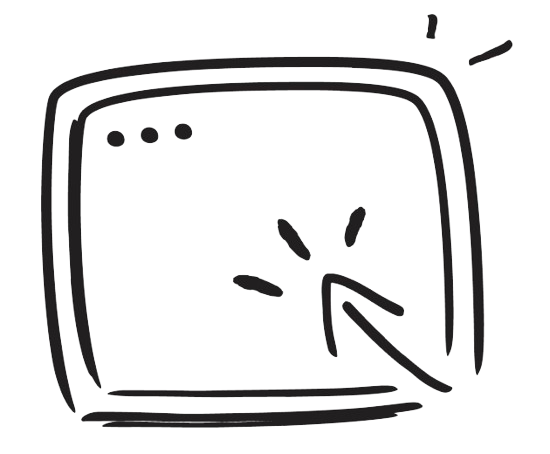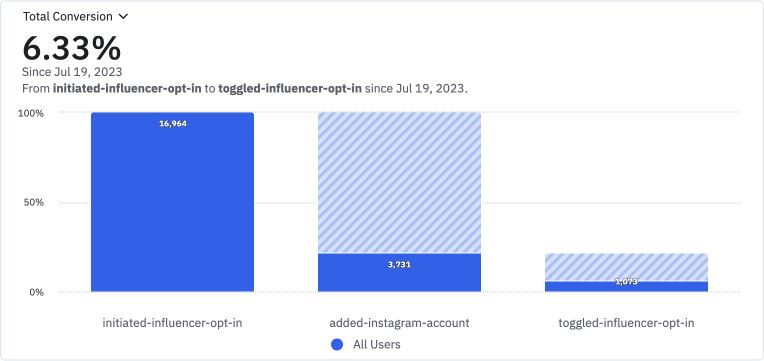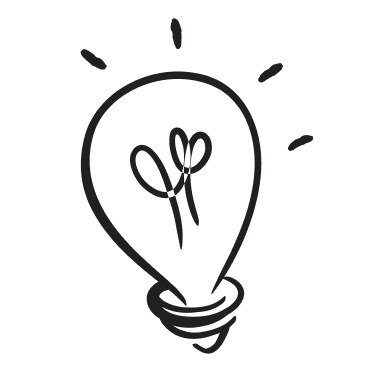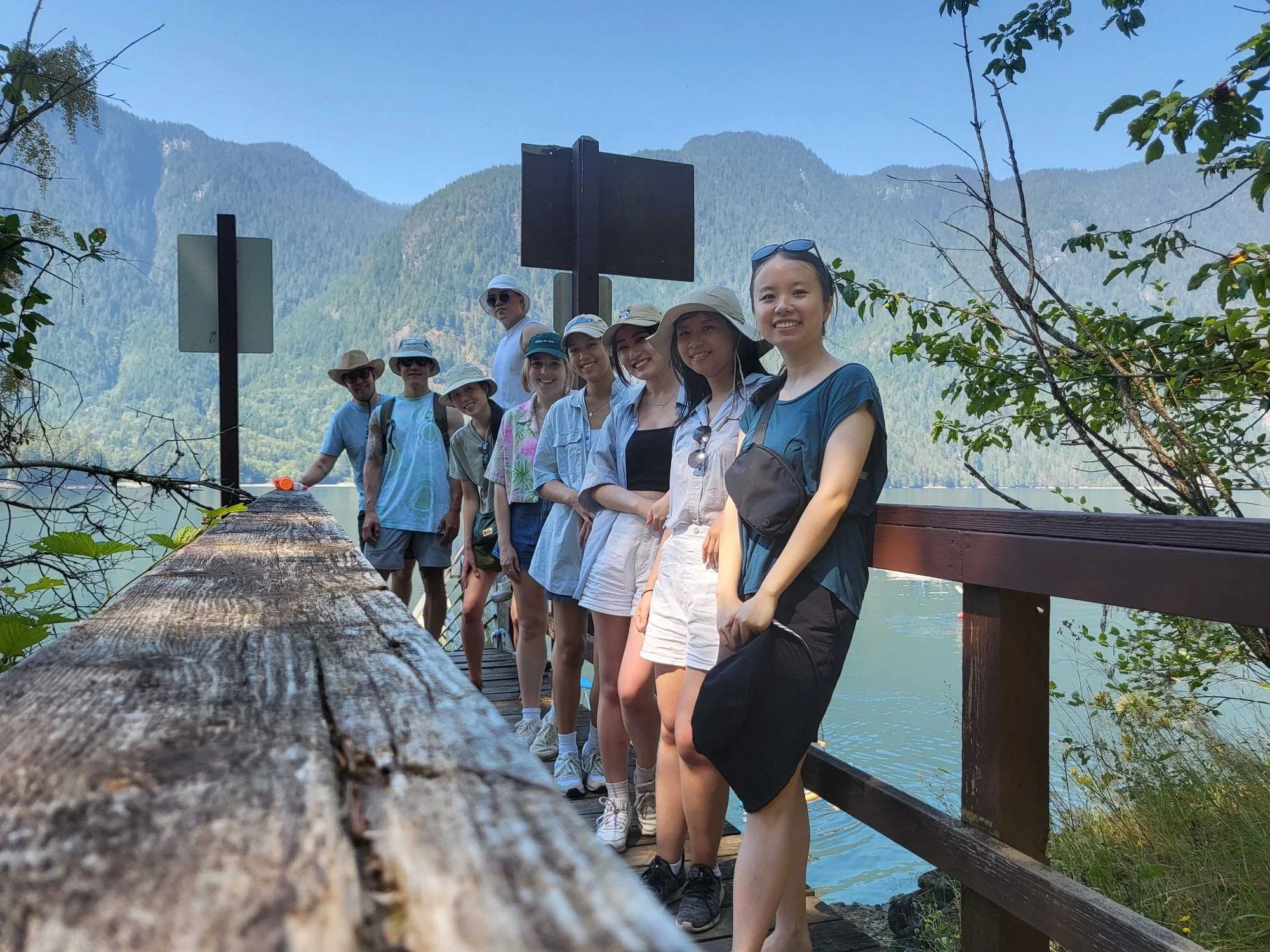Later | Creator & Brand Collabs - For Creators
How might we help creators find brand collaborations and manage their campaigns?
Project Details
Product
Desktop + mobile web feature suite - https://app.later.com/signup/
Find + Apply to Campaigns
Campaign Manager
Role
UX Designer
Wireframes + prototypes
Usability tests + interviews
Feature + roadmap shaping
Cross-functional team collaboration (PM, FE/BE/QA engineers, UI Designers, UX Researchers)
Timeline
4 months
Context
Background
Later is a social media marketing company that helps creators and businesses schedule and plan their content on various social media platforms.
Project Goal
This project aimed to expand our services by building a creator marketplace where creators can search, apply to, and manage campaigns.
Exploratory Research
Participants
Creator survey: Later (n=453), prospective (n=897), Mavrck (n=97)
Creator interviews: Later (n=11)
Goal
Understand what motivates a creator to invest in social media software
Findings
Large interest in brand collaborations as a revenue stream and willingness to pay for relevant tools
Most willing to pay for features that help optimize their strategy through data-informed recommendations
Mobile is incredibly important
Strong interest in media kits from current and non-Later users, especially with color and layout customization
Creators wanted to find campaigns to work on that still felt authentic to their niche
Creators wanted to be able to apply to campaigns, but some platforms only allowed brands to invite them to campaigns
Creators felt discouraged not knowing their campaign application status, and couldn’t easily track campaigns they applied to vs. campaigns they were working on
The Problem
Solution
Find + Apply to Campaigns
Help creators find and apply to collaborate with brands on campaigns that suit their niche.
Manage Campaigns
Allow creators to track campaigns they’ve interacted with so they have a clear idea of their status for every collaboration - e.g. Invited, Applied, Active, Archived
Competitor Exploration
Documentation of similar existing platforms to…
Provide a foundation/reference for design exploration
Determine common behaviours and features
Identify gaps to be filled
Feature Planning
Based on the common features in our competitor exploration and estimated level of effort vs. impact, we decided which features to prioritize. We also split these features up into phases to allow us plan our sprint timeline in a flexible yet granular way.
Flow charts
Flow charts were used to illustrate main user paths and scope out technical limitations. As we iterated into wireframes and high-fidelity mockups, minor changes were made to these flows which would not largely impact the UX or sprint timeline.
Journey Map + Storyboard
With a group of designers and the PM on this project, we did a half-day session of Journey Mapping, Storyboarding, and Sketching to guide the next steps for design.
Wireframes
Onboarding
Opt-in to Creator Database, Set Up Profile
Find + Apply to Campaigns
Find Campaigns
Open Campaign Application
Apply to Campaign - Success
Mockups
Onboarding
Creator Home
Opt-in to Creator Database, Set Up Profile
Find + Apply to Campaigns
Find Campaigns
Open Campaign Application
Apply to Campaign
Manage Campaigns
Active Campaigns
Invitations
Open Invitation
Applications
Interactive Prototypes
Campaign Application: Link to prototype
Opt-in to Creator Database: Link to prototype
High-fidelity Research
Participants
Prototype usability tests (n=7)
Beta opt-in tests (n=456)
Pain Points
Want more paid campaigns and fair compensation for deliverables
Lack ability to filter campaigns by paid/unpaid campaigns (78%), deliverable platform (56%), and content type (37%)
Unclear if compensation and deliverables are negotiable
Strengths
Creators enjoyed the convenience of having brand opportunities contained in Later and the transparency created through the campaign brief
“I like how easy it is to use. I don't have to log on to multiple platforms. Everything is already there.”
“Super easy to filter for different categories. I love how each campaign is a succinct summary of what the deliverables and compensation entails.”
Creators liked that this allowed them to connect with brands, generate income, and was easy to use.
“I love that Later is prioritizing opportunities for creators like myself to both generate income and be creative.”
Future Work
Encourage brands to include monetary compensation in campaigns to connect with more creators
Explore adding filters for paid/unpaid campaigns, deliverable platforms, and content type
Provide clearer guidelines for brands to follow when writing the ‘About’ section of their campaign brief
Allow brand to indicate whether compensations and deliverables are negotiable within the campaign brief
KPI
Conversion from discovery of Creator Home page to opting-in to the searchable database.
Impact Metrics
Conversion rates since full release (Jul 19/22):
14.4% from discovery of Creator Home page to opting-in to searchable database
14.1% from initiating opt-in to completing opt-in
This indicated that creators were not choosing to initiate opt-in after discovering the Creator Home page, and were also dropping off during the opt-in process.
Reasons for Drop-off
Reasons for Drop-off
Creator Home - lack of marketing: We never marketed this feature, and since our main user demographic was small businesses, many page visitors seemed to discover the homepage out of curiosity
Opt-in flow - Instagram connection issues: Many users dropped off at this point either due to not meeting the requirements, or general trouble authorizing Instagram.
What I Learned
Break complex projects into phases - this makes it easier to plan timelines, iterate, and test features early
Collaborate early with project managers - asking for KPI’s allows us to discuss UX suggestions so we can design for both the user and the business
Get feedback from engineers early and frequently - this can help isolate constraints/edge cases so more time can be spent on innovative yet achievable designs
Get feedback from fellow designers, especially when feeling stuck - this can help reduce tunnel vision on large projects, while also helping the design team to create a more holistic and consistent product experience

